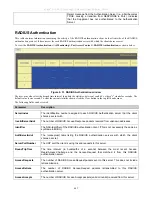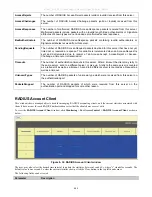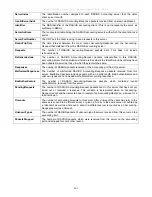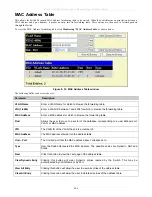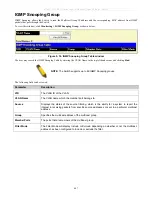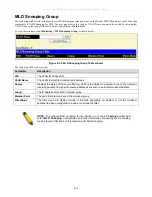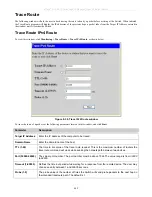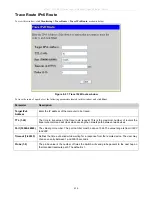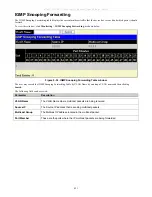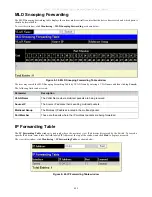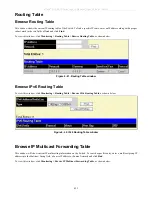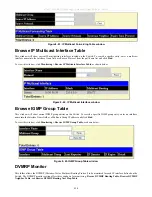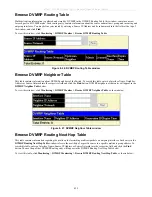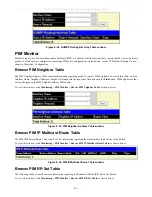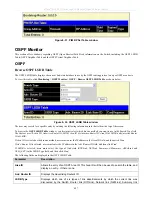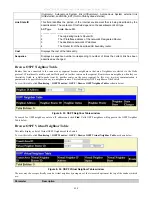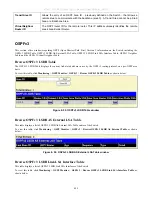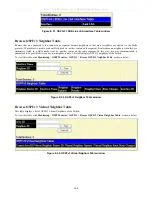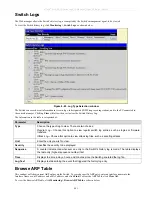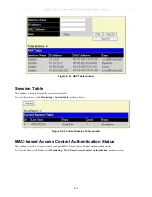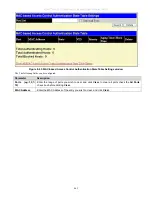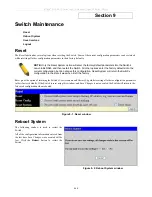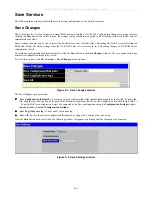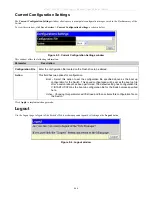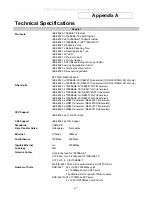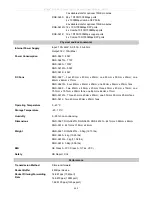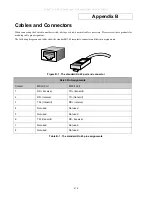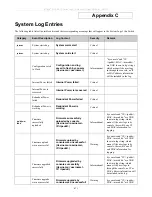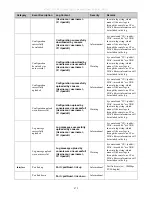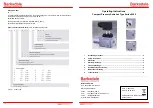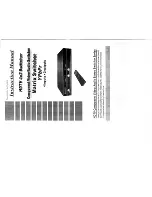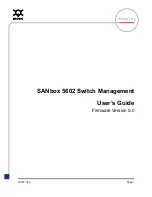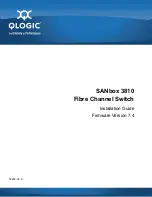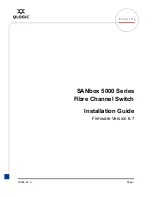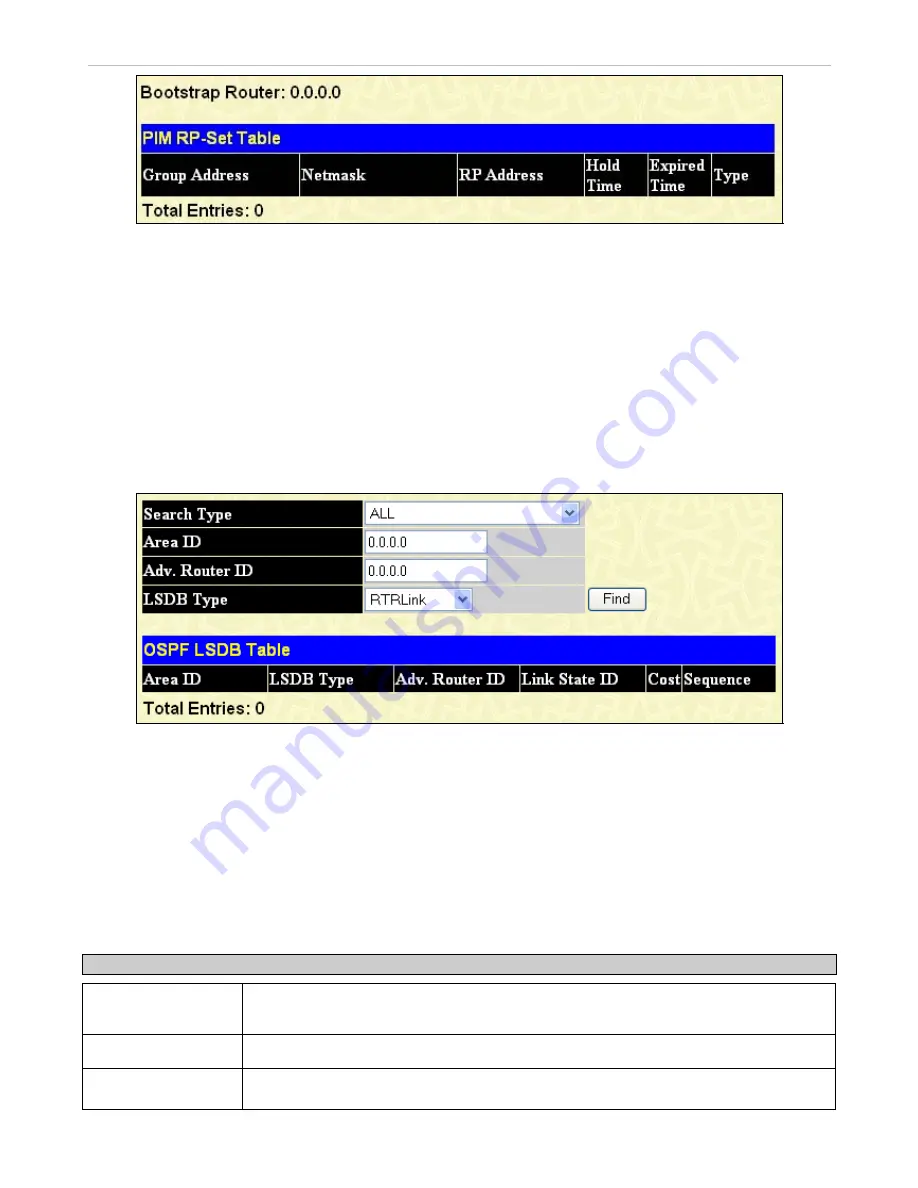
xStack
®
DGS-3600 Series Layer 3 Managed Gigabit Ethernet Switch
Figure 8- 51. PIM RP Set Table window
OSPF Monitor
This section offers windows regarding OSPF (Open Shortest Path First) information on the Switch, including the OSPF LSDB
Table, OSPF Neighbor Table and the OSPF Virtual Neighbor Table.
OSPF
Browse OSPF LSDB Table
The OSPF LSDB Table displays the current link-state database in use by the OSPF routing protocol on a per-OSPF area basis.
To view this table, click
Monitoring
>
OSPF Monitor
>
OSPF
>
Browse
OSPF LSDB Table
, as shown below:
Figure 8- 52. OSPF LSDB Table window
The user may search for a specific entry by entering the following information into the fields at the top of the screen:
To browse the
OSPF LSDB Table
window, you first must select which browse method you want to use in the Search Type field.
The choices are
All
,
Area ID
,
Advertise Router ID
,
LSDB
,
Area ID & Advertise Router ID
,
Area ID & LSDB
, and
Advertise Router
ID & LSDB
.
If
Area ID
is selected as the browse method, users must enter the IP address in the
Area ID
field, and then click
Find
.
If
Adv. Router ID
is selected, users must enter the IP address in the Adv. Router ID
field, and then click
Find
.
If
LSDB
is selected, users must select the type of link state (
RTRLink
,
NETLink,
Summary
,
ASSummary
,
ASExtLink
and
NSSA_EXT
) in the LSDB Type field, and then click
Find
.
The following fields are displayed in the OSPF LSDB Table:
Parameter
Description
Area ID
Allows the entry of an OSPF Area ID. This Area ID will then be used to search the table, and
display an entry
−
if there is one.
Adv. Router ID
Displays the Advertising Router’s ID.
LSDB Type
Displays which one of six types of link advertisements by which the current link was
discovered by the Switch: Router link (
RTRLink
), Network link (
NETLink
), Summary link
457

